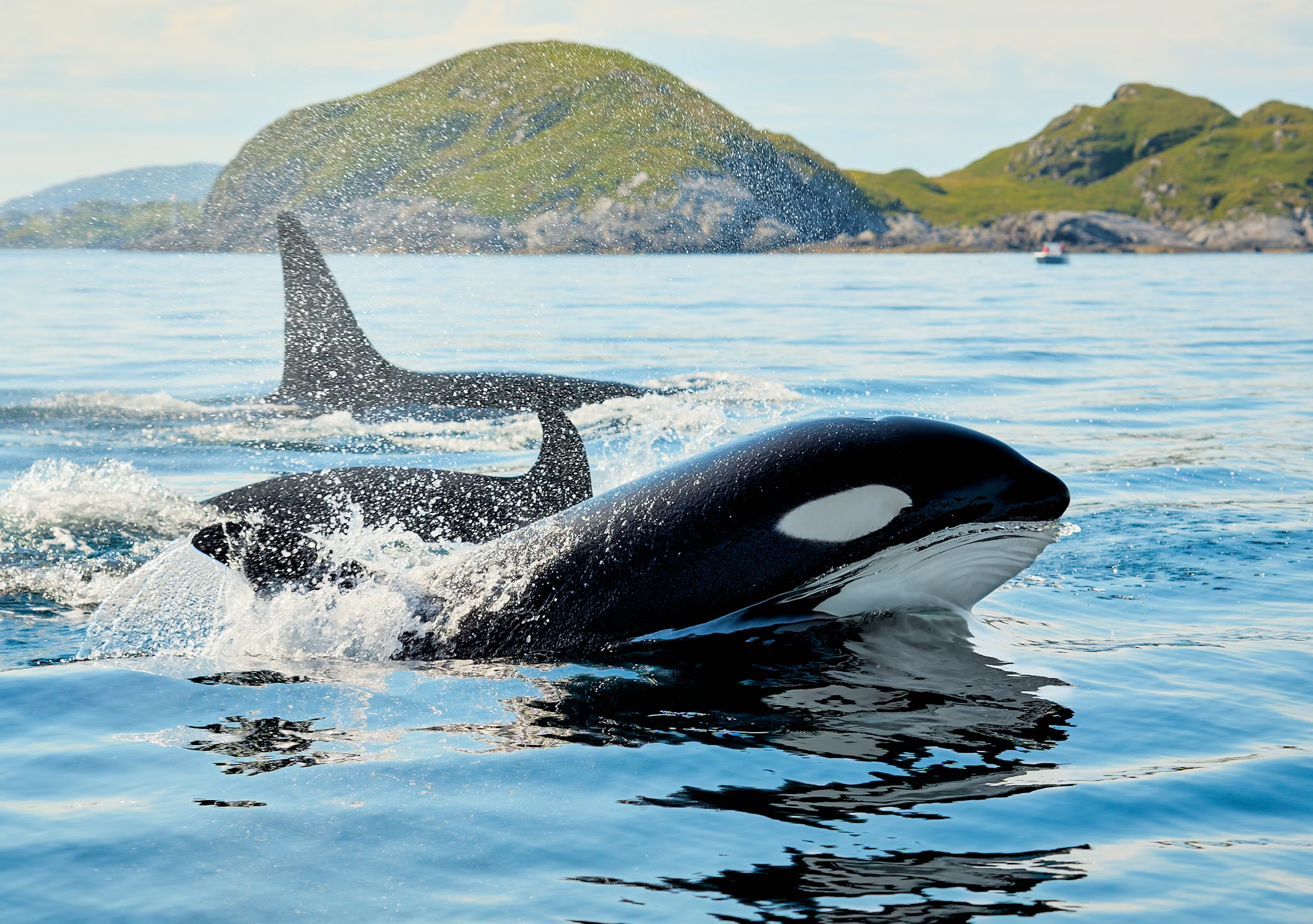
| Kingdom: | Animalia |
| Scientific Name: | Orcinus orca |
| Type: | Marine Mammal |
| Feed: | Carnivorous |
| Life Span: | 50-90 years |
| Natural Enemy: | None (Apex Predator) |
Orcas, also known as killer whales, are among the most intelligent and powerful predators in the ocean. Despite their name, they are actually the largest members of the dolphin family, not whales.
Orcas have a distinctive black and white coloration that makes them easily recognizable. They have a robust, streamlined body with a large dorsal fin that can reach up to 6 feet in height in males. Their powerful tail flukes and pectoral flippers enable them to reach speeds of up to 35 miles per hour, making them one of the fastest marine mammals.
These magnificent creatures can grow up to 32 feet in length and weigh as much as 6 tons. Males are typically larger than females, with more prominent dorsal fins. Orcas are found in all oceans of the world, from the Arctic to the Antarctic, and can adapt to both warm tropical waters and cold polar regions.
Orcas are highly social animals that live in complex family groups called pods. These pods can consist of up to 40 individuals and are led by the oldest female, known as the matriarch. Each pod has its own unique dialect of calls and whistles, which they use for communication and echolocation to locate prey in the vast ocean.
Diet
Orcas are apex predators with a diverse diet that varies by population and region. Some populations specialize in hunting fish like salmon and herring, while others prey on marine mammals including seals, sea lions, and even other whales. They are known for their sophisticated hunting techniques, often working together in coordinated attacks to capture large prey.

source: internet

source: internet
Social Behavior
Orcas exhibit complex social behaviors and strong family bonds. They live in matrilineal societies where offspring stay with their mothers for life. These intelligent creatures display sophisticated communication skills, problem-solving abilities, and cultural traditions that are passed down through generations. Different populations have distinct hunting strategies, vocalizations, and social structures.
Reproduction
Female orcas typically give birth to a single calf after a 15-18 month gestation period. Calves are born tail-first and are immediately able to swim. They nurse for up to two years and stay with their mothers for life. Females reach sexual maturity around 10-15 years of age and can reproduce until their 40s, with some living well into their 80s or 90s.

source: internet
Orcas face various threats including pollution, overfishing of their prey, and habitat degradation. Some populations are endangered due to these human activities. Conservation efforts focus on protecting their habitats, reducing pollution, and ensuring sustainable fishing practices to maintain healthy prey populations for these magnificent creatures.

source: internet

source: internet
